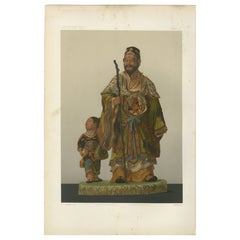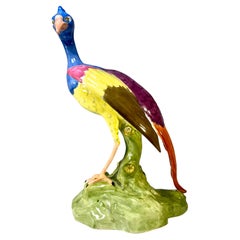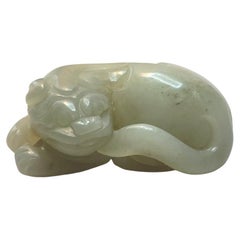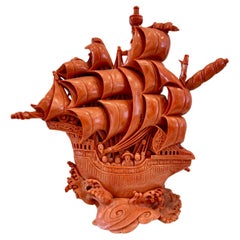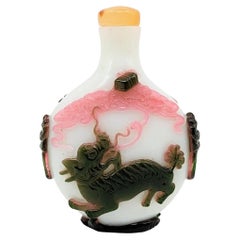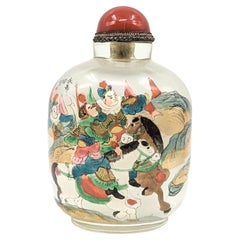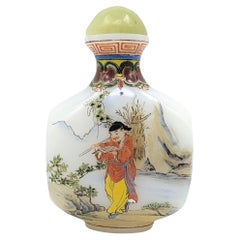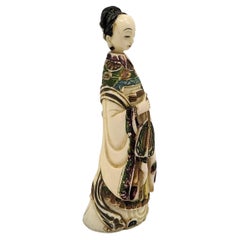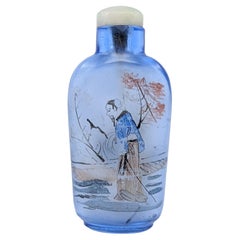Antique Chinese Figurines
1880s Antique Chinese Figurines
Paper
Early 20th Century British Antique Chinese Figurines
Porcelain
19th Century Chinese Antique Chinese Figurines
Jade
Late 19th Century Chinese Antique Chinese Figurines
19th Century Chinese Antique Chinese Figurines
Early 20th Century Chinese Antique Chinese Figurines
Early 20th Century Chinese Antique Chinese Figurines
19th Century Chinese Antique Chinese Figurines
Early 20th Century Chinese Antique Chinese Figurines
Early 20th Century Chinese Antique Chinese Figurines
19th Century Chinese Antique Chinese Figurines
19th Century Chinese Antique Chinese Figurines
19th Century Antique Chinese Figurines
Mid-19th Century Japanese Artisan Antique Chinese Figurines
19th Century Antique Chinese Figurines
Jade
19th Century Antique Chinese Figurines
19th Century Chinese Antique Chinese Figurines
19th Century Chinese Antique Chinese Figurines
19th Century Chinese Antique Chinese Figurines
19th Century Chinese Antique Chinese Figurines
19th Century Chinese Antique Chinese Figurines
19th Century Chinese Antique Chinese Figurines
Early 20th Century Chinese Antique Chinese Figurines
Early 20th Century Chinese Antique Chinese Figurines
Late 19th Century Chinese Antique Chinese Figurines
19th Century Chinese Antique Chinese Figurines
19th Century Chinese Antique Chinese Figurines
19th Century Chinese Antique Chinese Figurines
19th Century Chinese Antique Chinese Figurines
19th Century Chinese Antique Chinese Figurines
19th Century Chinese Antique Chinese Figurines
19th Century Chinese Antique Chinese Figurines
Mid-19th Century Chinese Antique Chinese Figurines
Mid-19th Century Chinese Antique Chinese Figurines
15th Century and Earlier Chinese Antique Chinese Figurines
15th Century and Earlier Chinese Antique Chinese Figurines
Mid-19th Century Chinese Antique Chinese Figurines
Mid-19th Century Chinese Antique Chinese Figurines
Late 19th Century Chinese Antique Chinese Figurines
Mid-19th Century Chinese Antique Chinese Figurines
Mid-19th Century Chinese Antique Chinese Figurines
Late 18th Century Chinese Antique Chinese Figurines
Mid-19th Century Chinese Antique Chinese Figurines
15th Century and Earlier Chinese Antique Chinese Figurines
15th Century and Earlier Chinese Antique Chinese Figurines
Late 19th Century Chinese Antique Chinese Figurines
Jade
Early 20th Century Chinese Arts and Crafts Antique Chinese Figurines
15th Century and Earlier Chinese Antique Chinese Figurines
Pottery
Late 19th Century Chinese Chinese Export Antique Chinese Figurines
Clay
19th Century Chinese Antique Chinese Figurines
Porcelain
Early 20th Century Chinese Antique Chinese Figurines
Lapis Lazuli
19th Century Chinese Qing Antique Chinese Figurines
Porcelain
18th Century Chinese Export Antique Chinese Figurines
Pottery
Early 20th Century Chinese Ming Antique Chinese Figurines
Bronze
Early 20th Century Antique Chinese Figurines
Porcelain
Mid-19th Century Chinese Qing Antique Chinese Figurines
Enamel
Late 19th Century French Empire Antique Chinese Figurines
Soapstone
Early 20th Century English Mid-Century Modern Antique Chinese Figurines
Porcelain
Early 20th Century Chinese Chinese Export Antique Chinese Figurines
Porcelain
Early 20th Century Unknown Chinoiserie Antique Chinese Figurines
Soapstone
- 1
Antique Chinese Figurines For Sale on 1stDibs
How Much are Antique Chinese Figurines?
- What are Chinese figurines?1 Answer1stDibs ExpertOctober 7, 2020
Chinese figurative sculptures vary widely depending on the medium and intended use. Ornate Buddhist figures assisted ritual meditation, wooden ancestor figures embodied the lingering spirit of a relative, ceramic mingqi burial figures accompanied one’s spirit in the afterlife, and decorative export sculptures presented an idealized version of Chinese culture and beauty.
- 1stDibs ExpertApril 5, 2022One type of Chinese figurines that is quite popular is shekwan or mudware. These small handmade figurines are often called mudmen and are, not surprisingly, crafted out of mud. In the early 1950s, a new era of mudman figurines began but these are not made individually and by hand. On 1stDibs, find authentic shekwan pieces from some of the world’s top sellers.
 Lotus GallerySeptember 23, 2020
Lotus GallerySeptember 23, 2020Most figurines just need a light dusting every once in a while. For a deeper cleaning to remove residue (such as nicotine or adhesives), try soaking in warm soapy water and gently washing with a soft cloth.
 Lotus GallerySeptember 23, 2020
Lotus GallerySeptember 23, 2020Chinese figurines come in all shapes and sizes. Most figures measure between 4” and 18” tall, with some being as small as 1” in height or as large as 36” (or more) in height
- 1stDibs ExpertAugust 20, 2024To tell if a figurine is antique, look on the base, bottom or back for maker's markings. You can cross-reference these marks with information published by trusted online resources to determine who made your piece. Then, you can conduct additional research to determine when the maker produced similar figurines. If your figurine is 100 or more years old, it is considered an antique. For assistance with dating, enlist the help of a certified appraiser or knowledgeable antique dealer. Find a wide range of antique figurines on 1stDibs.
- 1stDibs ExpertApril 5, 2022One thing to look for in an antique porcelain figure is to look for the maker’s mark, usually found on the bottom of the piece. The porcelain figure will also have a delicate fragile quality to it. On 1stDibs, find a collection of antique porcelain figures from some of the world’s top sellers.
- 1stDibs ExpertNovember 4, 2024To identify antique Chinese furniture, look carefully at its details. Chinese craftsmen often built furniture using mortise and tenon joinery, eliminating the need for nails and screws. If you see this type of hardware, your piece is likely not at least 100 years old, especially if the hardware still looks new and shiny. Since antique furniture was handmade, you will normally see slight imperfections, such as tool marks or slight variations in carvings. Pieces that appear completely uniform and pristine are less often genuine antiques.
When present, maker's marks can also be helpful. Research the marks to learn more about when the maker was active and producing pieces like yours. Alternatively, you can have a certified appraiser or experienced antique dealer evaluate your furniture for you.
Shop an assortment of antique Chinese furniture.  Lotus GallerySeptember 23, 2020
Lotus GallerySeptember 23, 2020The best way to know is to take it to an expert, such as an appraiser, reputable dealer or auction house, or museum
 PAGODA REDOctober 7, 2020
PAGODA REDOctober 7, 2020To determine the age of a Chinese furniture piece, look carefully at the joinery and finish. Natural expansion and contraction of the wood over time will cause a joint to protrude or retract, distorting a once-seamless fit. Antique lacquer finishes become crackled and worn over time. Areas of exposed wood, such as the underside of a table, the footrest of a chair, or the back of a cabinet should appear raw and dry compared to the finished surface. With use, the legs of tables and chairs become weathered near the bottom from precipitation and use.
